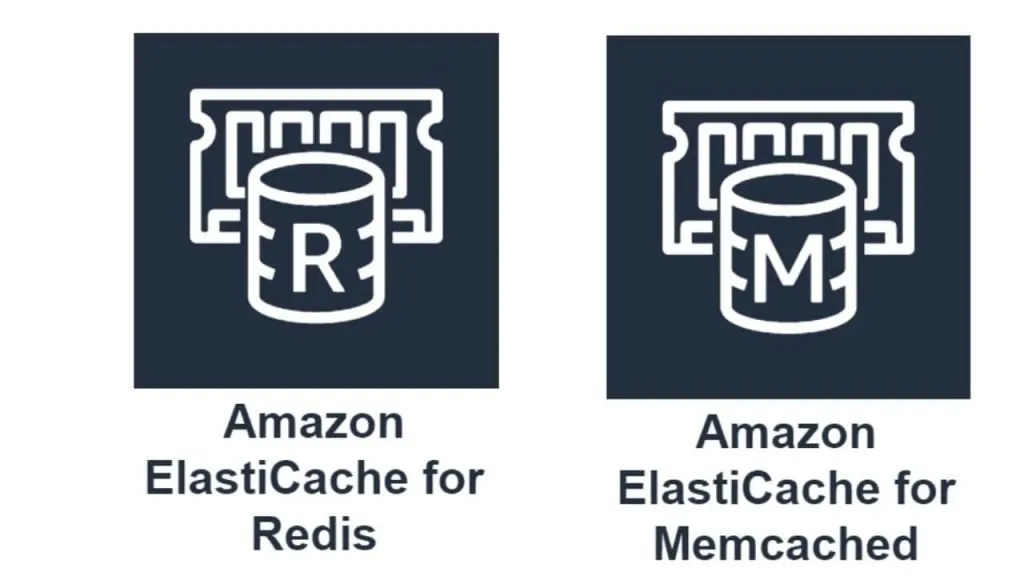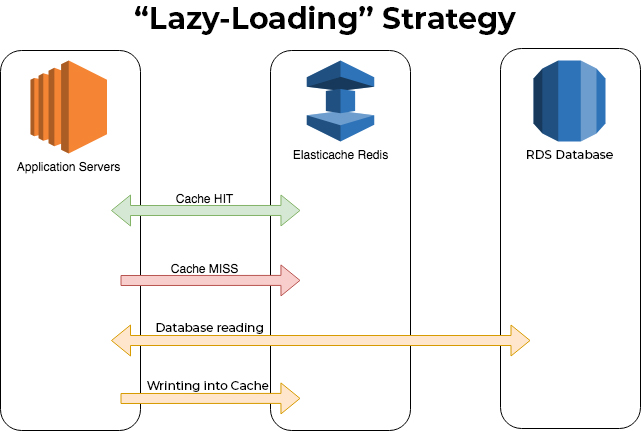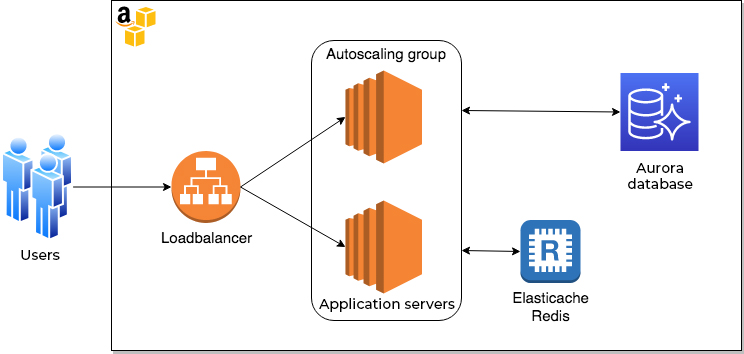What is AWS ElastiCache and How Does it Relate to Redis?
AWS ElastiCache is a fully managed in-memory data store service that simplifies the process of setting up, managing, and scaling Redis deployments in the cloud. Redis, on the other hand, is an open-source in-memory data structure store that can be used as a database, cache, and message broker. AWS ElastiCache supports Redis as a cache engine, allowing users to take advantage of Redis’s high performance and low latency for caching use cases.
Key Benefits of Using AWS Redis ElastiCache
AWS Redis ElastiCache offers several advantages for users looking to improve application performance, reduce operational burden, and enhance security features. By simplifying the process of setting up, managing, and scaling Redis deployments in the cloud, AWS Redis ElastiCache enables users to focus on building and deploying their applications without worrying about the underlying infrastructure.
One of the key benefits of using AWS Redis ElastiCache is its ability to improve application performance. By providing a fully managed in-memory data store service, AWS Redis ElastiCache enables users to take advantage of Redis’s high performance and low latency, making it an ideal solution for caching use cases. Additionally, AWS Redis ElastiCache supports automatic failover and multi-AZ replication, ensuring high availability and data durability for mission-critical applications.
Another advantage of using AWS Redis ElastiCache is its ability to reduce operational burden. With AWS Redis ElastiCache, users no longer have to worry about provisioning and managing infrastructure, patching software, or scaling their Redis deployments. Instead, AWS Redis ElastiCache handles these tasks automatically, freeing up users to focus on building and deploying their applications.
Finally, AWS Redis ElastiCache offers enhanced security features, such as encryption at rest and in transit, VPC support, and IAM integration. These features help ensure that user data is protected and secure, making AWS Redis ElastiCache an ideal solution for sensitive workloads.
How to Set Up and Configure AWS Redis ElastiCache
Setting up and configuring AWS Redis ElastiCache is a straightforward process that can be completed in a few simple steps. Here’s a step-by-step guide to help you get started:
-
Sign in to the AWS Management Console and navigate to the ElastiCache dashboard.
-
Click on the “Create” button and select “Redis” as the cache engine.
-
Configure the Redis cluster settings, such as the node type, number of nodes, and replication group.
-
Configure the security settings, such as the VPC, subnets, and security groups.
-
Set up user access by creating one or more Redis users and configuring their access permissions.
-
Review the configuration settings and click on the “Create” button to launch the Redis cluster.
-
Monitor and maintain the Redis cluster for optimal performance by regularly checking the metrics, logs, and events.
It’s important to note that AWS Redis ElastiCache supports several advanced features, such as automatic failover, multi-AZ replication, and backup and restore, that can help ensure high availability, data durability, and disaster recovery for your Redis deployments. Make sure to familiarize yourself with these features and configure them as needed to meet your specific use case requirements.
Best Practices for Using AWS Redis ElastiCache
To get the most out of AWS Redis ElastiCache, it’s important to follow best practices for optimizing cache performance, managing cache data, and monitoring cache usage. Here are some best practices to keep in mind:
-
Optimize cache performance: To optimize cache performance, make sure to use the latest Redis version, configure the appropriate cache parameters, and use connection pooling to manage connections between your application and the Redis cluster. Additionally, consider using Redis modules, such as Redisearch and RedisBloom, to add new data structures and algorithms to your Redis deployments.
-
Manage cache data: To manage cache data, make sure to implement cache eviction policies, such as LRU (Least Recently Used) or LFU (Least Frequently Used), to ensure that your cache doesn’t become too large and impact performance. Additionally, consider using Redis data structures, such as hashes, lists, and sets, to store and manage your data in a more efficient way.
-
Monitor cache usage: To monitor cache usage, make sure to use AWS ElastiCache metrics, logs, and events to track the performance and health of your Redis deployments. Additionally, consider using third-party monitoring tools, such as Datadog and New Relic, to get a more detailed view of your cache usage and performance.
-
Regularly update and patch the Redis cluster: To ensure security and stability, make sure to regularly update and patch the Redis cluster to fix any known vulnerabilities and improve performance. AWS ElastiCache makes it easy to apply updates and patches by providing automated patching and update features.
By following these best practices, you can ensure that your AWS Redis ElastiCache deployments are optimized for performance, security, and stability. Additionally, make sure to regularly review and update your cache strategy to ensure that it meets your specific use case requirements and business needs.
Real-World Use Cases for AWS Redis ElastiCache
AWS Redis ElastiCache is a popular choice for many organizations looking to improve application performance, reduce operational burden, and enhance security features. Here are some real-world use cases for AWS Redis ElastiCache:
-
Session management: AWS Redis ElastiCache can be used to manage user sessions in web applications, providing fast and efficient access to session data. By using Redis as a session store, organizations can reduce the load on their databases and improve application performance.
-
Gaming: AWS Redis ElastiCache is a popular choice for gaming companies looking to build high-performance, scalable gaming applications. By using Redis as a cache, gaming companies can reduce latency, increase throughput, and improve the overall gaming experience for their users.
-
Real-time analytics: AWS Redis ElastiCache can be used to power real-time analytics applications, providing fast and efficient access to large data sets. By using Redis as a cache, organizations can reduce the time it takes to process and analyze data, enabling them to make faster and more informed decisions.
-
Leaderboards: AWS Redis ElastiCache can be used to build and manage leaderboards for gaming and other applications. By using Redis as a cache, organizations can provide real-time updates to leaderboards, improving the user experience and engagement.
-
Chat applications: AWS Redis ElastiCache can be used to build and manage chat applications, providing fast and efficient access to chat messages. By using Redis as a cache, organizations can reduce latency and improve the overall chat experience for their users.
Many companies, such as Airbnb, Expedia, and Reddit, have successfully implemented AWS Redis ElastiCache in their applications. By using Redis as a cache, these companies have been able to improve application performance, reduce operational burden, and enhance security features. By following best practices for using AWS Redis ElastiCache, organizations can ensure that their Redis deployments are optimized for performance, security, and stability.
Comparing AWS Redis ElastiCache with Other Cache Solutions
When it comes to caching solutions, there are several options available, including Memcached, Amazon DynamoDB, and Apache Cassandra. However, AWS Redis ElastiCache stands out as a popular choice for many organizations. Here’s a comparison of AWS Redis ElastiCache with other cache solutions:
-
Memcached: Memcached is an open-source, high-performance memory object caching system that is commonly used for speeding up dynamic web applications. While Memcached is a simple and easy-to-use caching solution, it lacks some of the advanced features and capabilities of AWS Redis ElastiCache. For example, AWS Redis ElastiCache supports Redis data structures, such as hashes, lists, and sets, which can be used to store and manage data in a more efficient way. Additionally, AWS Redis ElastiCache supports advanced features, such as automatic failover, multi-AZ replication, and backup and restore, which are not available in Memcached.
-
Amazon DynamoDB: Amazon DynamoDB is a fully managed NoSQL database service that can be used for caching and other data management tasks. While Amazon DynamoDB is a powerful and scalable database solution, it may not be the best choice for caching use cases. AWS Redis ElastiCache, on the other hand, is specifically designed for caching and provides advanced features and capabilities for managing cache data. Additionally, AWS Redis ElastiCache is optimized for low latency and high throughput, making it an ideal choice for caching use cases.
-
Apache Cassandra: Apache Cassandra is a distributed NoSQL database that is designed to handle large amounts of data across many commodity servers. While Apache Cassandra is a powerful and scalable database solution, it may not be the best choice for caching use cases. AWS Redis ElastiCache, on the other hand, is specifically designed for caching and provides advanced features and capabilities for managing cache data. Additionally, AWS Redis ElastiCache is optimized for low latency and high throughput, making it an ideal choice for caching use cases.
When choosing a caching solution, it’s important to consider the specific use case requirements and business needs. For organizations looking for a fully managed, high-performance caching solution with advanced features and capabilities, AWS Redis ElastiCache is an ideal choice. By following best practices for using AWS Redis ElastiCache, organizations can ensure that their Redis deployments are optimized for performance, security, and stability.
Troubleshooting Common Issues with AWS Redis ElastiCache
While AWS Redis ElastiCache is a reliable and high-performance caching solution, users may encounter issues from time to time. Here are some common issues that users may encounter and solutions for troubleshooting them:
-
Connectivity issues: Users may experience connectivity issues when trying to connect to their Redis cluster. This can be caused by a variety of issues, such as network connectivity issues, security group configurations, or firewall settings. To troubleshoot connectivity issues, users should check their network connectivity, security group configurations, and firewall settings to ensure that they are configured correctly. Additionally, users can use tools, such as telnet or netcat, to test connectivity to their Redis cluster.
-
Performance issues: Users may experience performance issues when using their Redis cluster. This can be caused by a variety of issues, such as high cache usage, inefficient cache data management, or insufficient system resources. To troubleshoot performance issues, users should monitor their cache usage, manage their cache data efficiently, and ensure that they have sufficient system resources. Additionally, users can use tools, such as Redis commands or monitoring tools, to identify and resolve performance issues.
-
Data consistency issues: Users may experience data consistency issues when using their Redis cluster. This can be caused by a variety of issues, such as network partitions, cluster failures, or data replication issues. To troubleshoot data consistency issues, users should ensure that their Redis cluster is configured correctly, monitor their cluster for failures, and use data replication features to ensure data consistency. Additionally, users can use tools, such as Redis commands or monitoring tools, to identify and resolve data consistency issues.
To prevent issues from arising, it’s important to regularly monitor and maintain the Redis cluster. This includes monitoring cache usage, managing cache data, and updating and patching the Redis cluster regularly. By following best practices for using AWS Redis ElastiCache and regularly monitoring and maintaining the Redis cluster, organizations can ensure that their Redis deployments are optimized for performance, security, and stability.
Future Trends and Developments for AWS Redis ElastiCache
AWS Redis ElastiCache is a powerful and versatile caching solution that is constantly evolving to meet the needs of modern applications. Here are some future trends and developments to look out for in AWS Redis ElastiCache:
-
Integration of machine learning and artificial intelligence: Machine learning and artificial intelligence are becoming increasingly important in modern applications. AWS Redis ElastiCache can be used to power machine learning and artificial intelligence workloads, providing fast and efficient access to large data sets. In the future, we can expect to see more integration between AWS Redis ElastiCache and machine learning and artificial intelligence frameworks, making it easier for developers to build intelligent applications.
-
Support for new data structures and algorithms: AWS Redis ElastiCache supports a wide range of data structures and algorithms, including hashes, lists, sets, and sorted sets. In the future, we can expect to see support for new data structures and algorithms, providing developers with even more tools to build high-performance applications.
-
Improved security features: Security is a top priority for AWS Redis ElastiCache. In the future, we can expect to see improved security features, such as advanced encryption and authentication options, making it even easier for developers to build secure applications.
-
Support for new use cases and applications: AWS Redis ElastiCache is a versatile caching solution that can be used for a wide range of use cases and applications. In the future, we can expect to see support for new use cases and applications, such as real-time streaming data processing and Internet of Things (IoT) applications, making it easier for developers to build high-performance applications in these areas.
By staying up-to-date with the latest trends and developments in AWS Redis ElastiCache, developers can ensure that they are using the most advanced and efficient caching solution for their applications. Whether you are building a high-performance gaming application, a real-time analytics application, or a machine learning application, AWS Redis ElastiCache provides the tools and features you need to build fast, efficient, and scalable applications.






